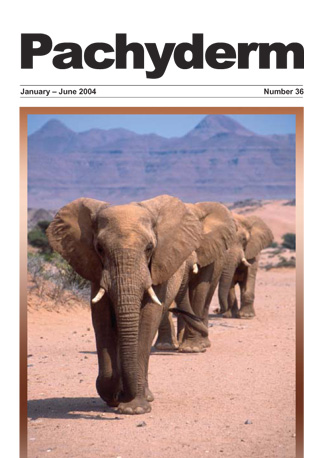Ecological basis of the new elephant management policy for Kruger National Park and expected outcomes
Abstract
The maintenence of Kruger NP's indigenous biodiversity is the focus of the management policy which has evolved since the 1995 moratorium on culling the resident elephant population was put in place. This 'Managing for maximum biodiversity will be achieved through principles outlined in the 'intermediate disturbance hypothesis' and by inducting elephant populations fluctuations, which is is believed will also play an important role.' To implement the programme Kruger NP was divided into 6 zones which were based on research on elephant clan movements. Two small botanical reserves in which medium elephant densities will be maintained are located in the northern and southern extremes of the Park. The remainder is divided into four larger similar sized areas. Two are low-elephant-impact where elephant densities will be actively reduced through management, and the other two are high-elephant-impact zones where no population control will be conducted. At a point in future when the biodiversity monitoring programmes indicate that acceptable thresholds of change have been reached or exceeded the management option for the low and high elephant impact zones will be reversed. (Whyte, 2001;Whyte, et al., 1998, 1999, 2003)
Downloads
Published
How to Cite
Issue
Section
License
Copyright (c) 2004 Ian J. Whyte

This work is licensed under a Creative Commons Attribution-NonCommercial 4.0 International License.




